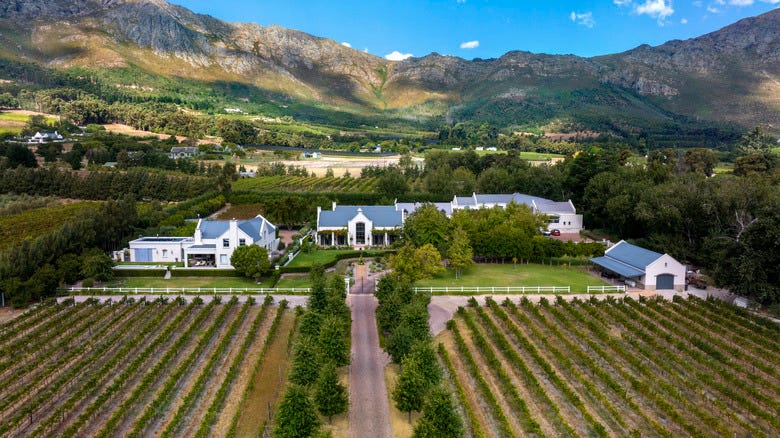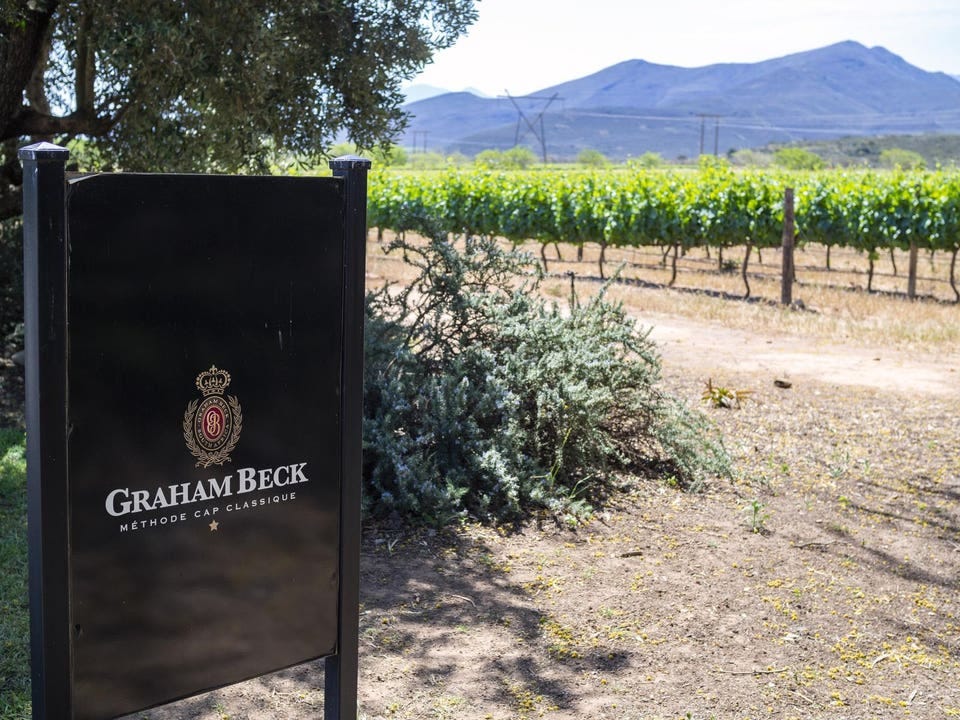Cap Classique refers to South African sparkling wines made via the traditional method (in-bottle secondary fermentation), predominantly using Chardonnay and Pinot Noir. While the term "Methode Cap Classique" (MCC) was officially adopted in 1992, pioneering producers like Simonsig and Graham Beck had already begun experimenting decades earlier. Today, Cap Classique embodies South Africa’s growing reputation for refined, high-quality fizz—often showcasing lively fruit, bright acidity, and a well-integrated mousse.
Key Features
Regional Focus – MCC production flourishes in cooler, coastal areas of the Western Cape, such as Stellenbosch, Franschhoek, and parts of Elgin and Hemel-en-Aarde—sites known for morning mists and maritime breezes that help preserve acidity.
Grape Varieties – Although Chardonnay and Pinot Noir dominate, smaller amounts of Pinot Meunier, Chenin Blanc, or other grapes occasionally appear in blends, contributing alternative flavor profiles.
Aging Requirements – While there is no single mandatory aging minimum, many producers rest their wines on lees for 12 months or more, aiming for richer complexity beyond mere fruit-driven charm.
Why It Matters
Global Ambitions – Cap Classique has progressed from local curiosity to serious contender on the international stage, with certain cuvées rivaling well-known Old World sparklers.
Stylistic Range – Producers offer everything from accessible, fruit-forward NV blends to vintage-dated, extended lees-aged bottlings that delve into brioche and roasted nut nuances.
Climate Adaptations – With South Africa’s warmer latitude, vineyard management (choice of aspect, altitude, and cooling influences) proves critical in maintaining the acidity essential to sparkling wines.
Quiz Prompt
Why do cool-climate regions within the Western Cape lend themselves to Cap Classique’s freshness and brightness?
In what ways might Chenin Blanc alter the typical Chardonnay–Pinot Noir dynamic in an MCC blend?
Premium Subscriber Content
Deep Dive – Producer Insights & Emerging Trends
Graham Beck famously provided the celebratory sparkling wine at Nelson Mandela’s inauguration and Barack Obama’s presidential victory—two milestone moments that underscored Cap Classique’s place at high-profile gatherings.
Keep reading with a 7-day free trial
Subscribe to Daily Terroir: Exploring Wine Regions One Day at a Time to keep reading this post and get 7 days of free access to the full post archives.






